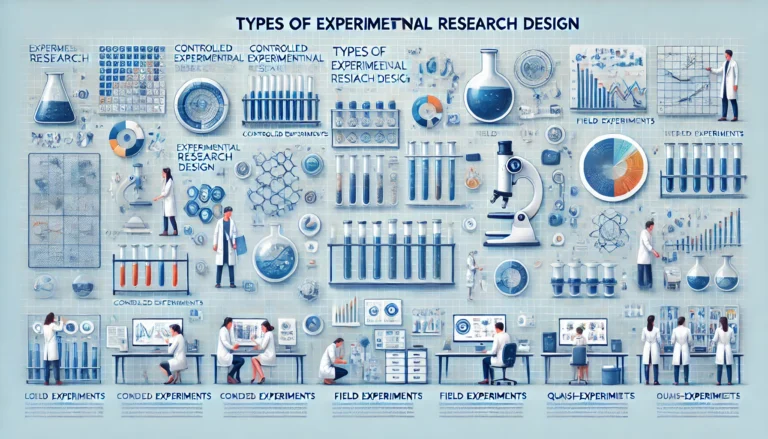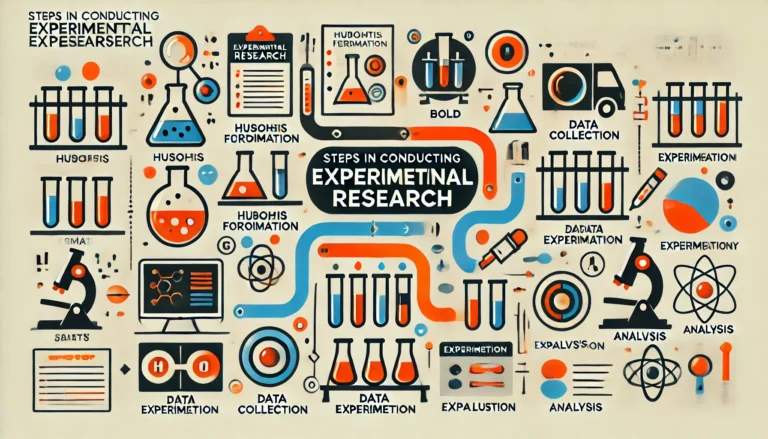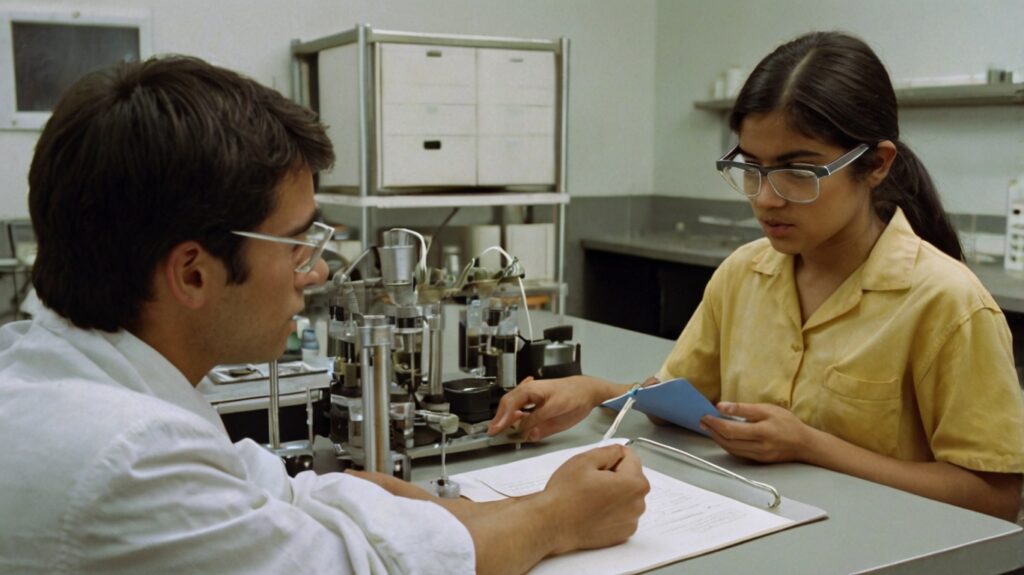Quantitative Approach
A quantitative research approach involves the systematic collection and analysis of numerical data. It can be utilized to identify patterns and calculate averages, make predictions, examine cause-and-effect relationships, and generalize findings to broader populations.
Experimental Research
Experimental research involves procedures for gaining knowledge by collecting new or fresh observations under controlled conditions. It reveals the causes-and-effect relationship of variables. Careful observation and immediate correct recording of data are the activities of this research.
One group is considered experimental, which is the independent variable, while the other is the control group, which is the dependent variable. Though both causal relationships are shown and the situation is checked. Experimental research has two types i.e. laboratory and field experiments.
Elements of the Experimental Research
Experiments have seven parts. Not all experiments have all of these parts, and some have all seven parts plus others.
Treatment
In most experiments, we create a situation or enter into an ongoing situation and modify it. The treatment (or the stimulus or manipulation) is what we do. The treatment is the independent variable or a combination of independent variables.
Dependent Variables
Dependent variables or outcomes in experimental research are the physical conditions, social behaviors, attitudes, feelings, or beliefs of participants that change in response to treatment.
We can measure dependent variables by using paper-and-pencil indicators, observations, interviews, or physiological responses (e.g., heartbeat or sweating palms). Frequently, we measure the dependent variable more than once during an experiment.
Pretest
A pretest is a measurement of the dependent variable conducted before exercising the treatment.
Post-test
The post-test is the measurement of the dependent variable after the treatment has been introduced into the experimental situation. We often divide participants into two or more groups for comparison purposes. A simple experiment has two groups, only one of which receives the treatment.
Experimental Group

The experimental group is the group that receives the treatment or in which the treatment is present.
Control Group
The group that does not receive the treatment is the control group. When the independent variable takes on many different values, more than one experimental group is used.
Techniques to Control Experiment
Control is crucial in experimental research. We want to control all aspects of the experimental situation to isolate the effects of the treatment. By controlling confounding variables, we eliminate alternative explanations that could undermine our attempts to establish causality.
Deception
We sometimes use deception to control the experimental setting. Deception occurs when we intentionally mislead research participants through written or verbal instructions, the actions of others, or aspects of the setting.
The purpose of deception is to control what the participants see and hear and what they believe is occurring. This usually means creating a cover story.
Cover Story
It is a false explanation of the study’s purpose that we tell participants to mislead them about its true purpose. The cover story helps to satisfy curiosity but reduces demand characteristics.
Confederate
Using deception may involve the use of a confederate—someone who pretends to be another research participant or bystander but who actually works for the researcher and deliberately misleads participants.
Types of Experimental Research Design

Classical Experimental Design
An experimental design that has random assignment[1], a control group, an experimental group, and a pretest and post-test for each group.
Pre-experimental Designs
Experimental plans that lack random assignment or use shortcuts and are much weaker than the classical experimental design are substituted in situations in which an experimenter cannot use all of the features of a classical experimental design but the design has weaker internal validity.
Static Group Comparison Design
An experimental plan with two groups, no random assignment, and only a post-test.
Quasi-experimental Designs
A quasi-experimental design, similar to a true experiment, seeks to establish a causal relationship between a dependent and independent variable. In contrast, to a genuine experiment, a quasi-experiment does not depend on random assignment. Instead, participants are allocated to groups based on predetermined criteria.
One-shot Case-study Design
An experimental plan with only an experimental group and a post-test but no pretest.
Two-Group Post-test-Only Design
This design is identical to the static group comparison with one exception; you randomly assign. It has all parts of the classical design except a pretest.
Interrupted Time Series Design
In an interrupted time series design, you measure the dependent variable on one group over time using many multiple dependent variable measures before (pretests) and after treatment (post-tests).
Equivalent Time-series Design
An experimental plan with several repeated pretests, post-tests, and treatments for one group, often over a period of time.
Steps in Conducting Experimental Research
Following the basic steps of the research process, we decide on a topic, narrow it into a testable research problem or question, and then develop a hypothesis with variables.

Plan Experimental Design
A crucial early step is to plan a specific experimental design (to be discussed). As we plan, we decide the number of groups to use, how and when to create treatment conditions, the number of times to measure the dependent variable, and what the groups of participants will experience from the beginning to the end of the study. It includes;
- Identification of your research question and defining variables, i.e., independent and dependent.
- Formulation of hypothesis for predicting the relationship between dependent and independent variables.
- Determination of the specific procedures and methods to test your hypotheses such as selection of specific experimental design, sample size, the process to select participants, and data collection method, i.e., questionnaire and interview schedule.
Involvement of Participants
The experiment begins after we locate volunteer participants and randomly assign them to groups. We give them precise, pre-planned instructions.
Pretest
We often pilot-test the experiment. We may measure the dependent variable in a pretest before the treatment. We then expose one group only to the treatment (or a high level of it).
Post-test
Finally, we measure the dependent variable in a post-test. We also conduct interviews of participants about the experiment before they leave.
Data Analysis
We record measures of the dependent variable and examine the results by using appropriate statistical method for each group to see whether the results support or reject the hypothesis.
Report Findings
Analyze the data and make interpretations to derive conclusions regarding the relationship between the variables. Report your findings clearly and concisely, considering limitations and potential future research directions.
[1] Random assignment is a method of grouping your sample participants using randomization. This strategy gives every sample member an equal chance of being assigned to a control or experimental group.






